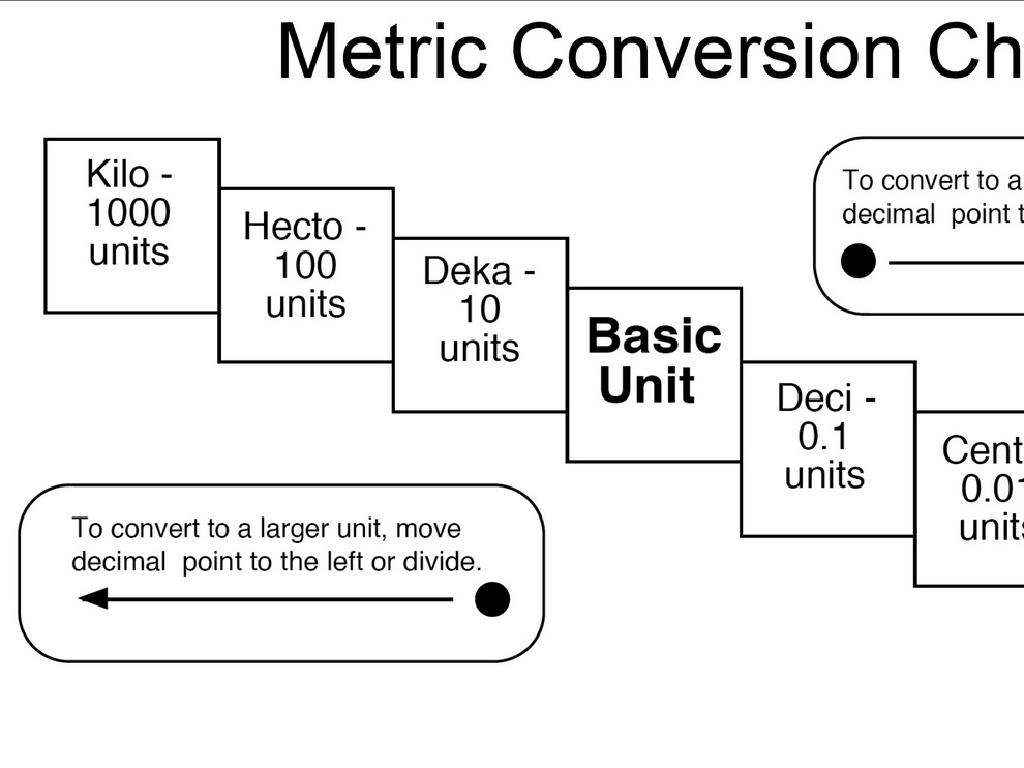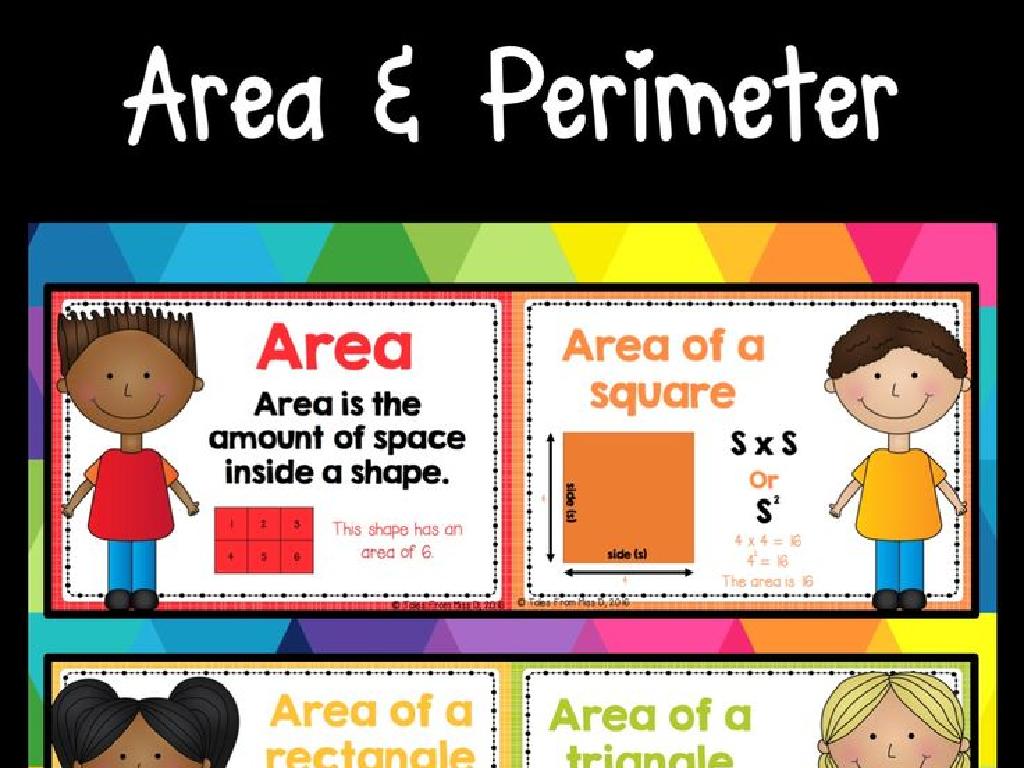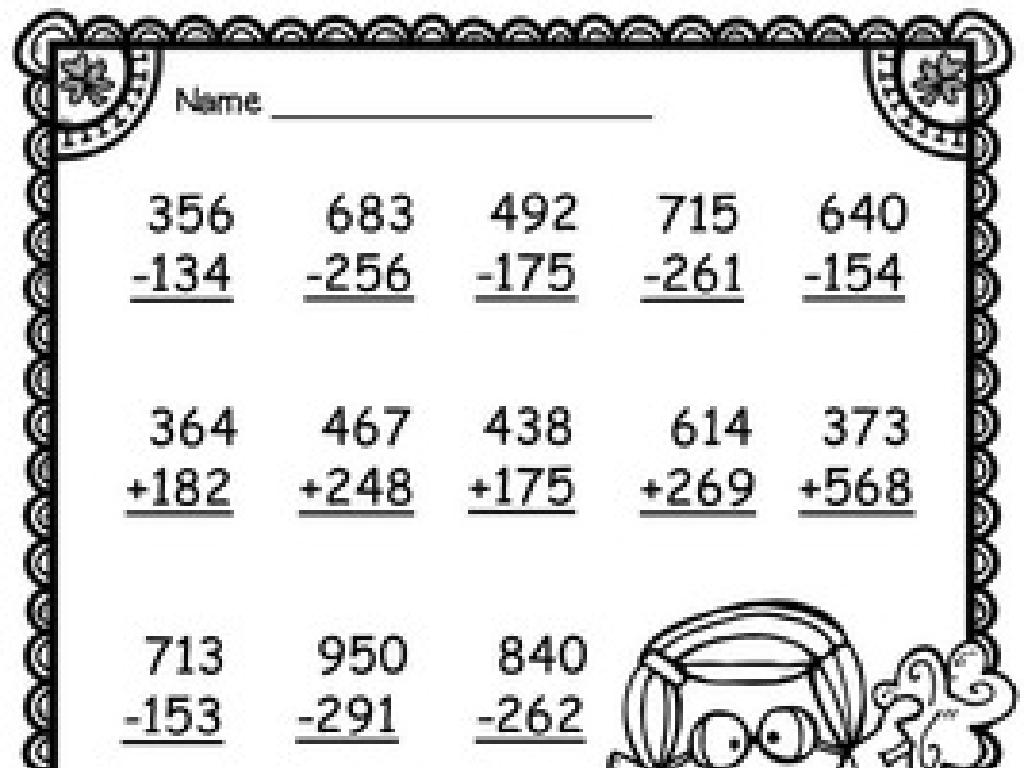Complete A Sequence - Up To 20
Subject: Math
Grade: Kindergarten
Topic: Counting Forward And Back To 20
Please LOG IN to download the presentation. Access is available to registered users only.
View More Content
Welcome to Counting!
– Learning about numbers
– Counting forward to 20
– Start at 1, then 2, 3, 4, … up to 20
– Counting backward from 20
– Start at 20, then 19, 18, 17, … down to 1
– Becoming counting stars!
|
This slide introduces the concept of counting to Kindergarten students. Begin by engaging their interest in numbers and the importance of counting. Demonstrate counting forward from 1 to 20, using visual aids like number charts or counters if possible. Then, show them how to count backward from 20 to 1, which helps with understanding number order and prepares them for subtraction concepts. Use interactive activities like counting objects, singing counting songs, or playing counting games to make the learning process fun and memorable. Encourage the students to practice counting at home with their families to become confident ‘counting stars’.
Understanding Sequences Up to 20
– What is a sequence?
– A sequence is a pattern or an order.
– Sequences with numbers
– We add or subtract to create number sequences.
– Counting in sequence
– Let’s count in order, like 1, 2, 3, up to 20.
– Practice together!
– We’ll count as a class and have fun!
|
This slide introduces the concept of sequences to Kindergarten students, emphasizing the idea of a pattern or order. Explain that sequences can be made with numbers by adding or taking away, which is a foundational skill in mathematics. Engage the students by counting together as a class from 1 to 20, reinforcing the concept of a sequence. Encourage participation and make the activity interactive by using visual aids or physical movements to represent the numbers. This will help the students understand and remember the sequence of numbers up to 20.
Counting Forward Up to 20
– Start counting at 1
– Each number is one more
– After 1 comes 2, then 3, and so on
– Count from 1 to 20
– Use your fingers to count along
– Practice makes perfect
– Repeat counting daily to improve
|
This slide introduces the concept of counting forward for Kindergarten students. Begin by explaining that counting forward means starting at the number 1 and then adding one more each time to get the next number. Demonstrate this concept by counting aloud from 1 to 20, encouraging the students to join in and use their fingers to keep track. Emphasize that each subsequent number is one greater than the previous one. To reinforce learning, engage the students in daily counting practice, using a variety of fun and interactive activities such as counting objects, singing counting songs, or playing counting games.
Counting Backward from 20
– Counting backward is reverse counting
– Start at 20 and count down
– Let’s count: 20 to 1 together
– Practice with me: 20, 19, 18… all the way to 1
– Practice makes perfect
– Keep practicing counting backward to get faster!
|
This slide introduces the concept of counting backward, which is an essential skill for understanding number order and subtraction. Start by explaining that counting backward is just like counting forward, but instead of going up, we go down. Demonstrate by counting from 20 to 1 out loud, encouraging the students to join in. Use visual aids like a number line if possible. After the group practice, encourage individual practice. Suggest fun activities like counting down during cleanup time or playing games that involve reverse counting. The goal is for students to become comfortable with the number sequence in reverse order.
Completing Number Sequences
– Sequences with missing numbers
– Numbers in order, but some are missing, like 1, 2, __, 4
– Using knowledge to fill blanks
– Think: What number comes next after 2?
– Practice with example sequences
– Example: 5, 6, __, 8. What number is missing?
– Ready to complete your own?
|
This slide introduces the concept of completing number sequences to Kindergarten students. Begin by explaining that a sequence is a set of numbers in a specific order. Sometimes, there are missing numbers in a sequence, and we can figure out what they are by looking at the numbers we know. Use simple sequences that count up or down by ones and have the students practice filling in the missing numbers. For example, show a sequence like 5, 6, __, 8, and ask the students what number should be in the blank. Encourage them to count out loud and use their fingers if needed. After going through a few examples together, challenge the students to complete sequences on their own or in small groups. Provide guidance and positive reinforcement as they work through the activity.
Let’s Practice Sequences!
– Practice missing number sequences
– Think about the next number
– What comes after 2, 4, ?, 8…
– We’ll solve the first sequence together
– Example: 1, 2, 3, ?, 5 – The missing number is 4
– Then it’s your turn to try!
|
This slide is designed to engage Kindergarten students in understanding and completing number sequences up to 20. Start by explaining that a sequence is a set of numbers in a specific order. Demonstrate how to identify the pattern in a sequence and use it to find missing numbers. Begin with a simple sequence together, such as 1, 2, 3, ?, 5, and fill in the missing number as a class. Then, encourage students to try completing sequences on their own or in small groups. Provide sequences with one or two missing numbers and offer guidance as needed. Possible activities include using number cards, interactive whiteboard sequences, or physical hopping games where students jump to the next number in the sequence.
Sequence Scavenger Hunt Activity
– Let’s play a sequencing game!
– Find hidden number cards
– Look around the room for cards with numbers
– Work as a team to order numbers
– Help each other find and sort the numbers
– Complete the sequence up to 20
– Place the cards in order from 1 to 20
|
This interactive class activity is designed to help Kindergarten students practice their counting and understanding of numerical sequences in a fun and engaging way. Hide numbered cards around the classroom before the activity begins. Encourage the children to search for the cards and then work together to arrange them in the correct order from 1 to 20. This will not only reinforce their counting skills but also promote teamwork and problem-solving. As they find and place each card, they’ll be completing a sequence, which is a foundational math skill. For differentiation, consider having varying levels of difficulty with the sequences or different sets of numbers for groups to complete. Monitor the students as they work, offering guidance and encouragement as needed.
Great Counting!
– Excellent work with sequences
– Sequences have a pattern
– Like steps: 1, 2, 3, 4, …
– Practice counting every day
– Try counting toys, steps, or claps
– Keep it up at home!
|
Congratulations to the students for their hard work in learning to count and complete sequences up to 20. It’s important to reinforce the concept that sequences follow a specific pattern, which they’ve practiced in class. Encourage them to continue practicing at home by counting everyday items, which will help solidify their understanding of sequences and numbers. Suggest fun counting activities like counting toys, steps while walking, or claps in a song. Remind them that regular practice is key to becoming confident in their counting skills.






